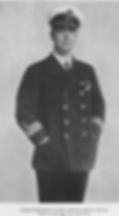Characters of WW1 - Frank Brock
- Shaun Lewis
- 5 days ago
- 2 min read
CHARACTERS OF WW1
One of the more interesting characters I had to research for my latest WW1 novel, The Suicide Club, was Frank Brock. Brock was a director of the famous, family firework manufacturing company, C T Brock and Company. Forever interested in chemistry and explosives, he is reported to have blown up a stove in an experiment at his school, Dulwich College.
On the outbreak of WW1, he initially joined the Royal Artillery, but within a month was personally poached by Churchill, the First Lord of the Admiralty, to join the Royal Naval Volunteer Reserve. Very soon, he was transferred to the Royal Naval Air Service and engaged on the planning staff for the RNAS’s raid on Friedrichshafen. I describe this thrilling raid in an earlier novel, The Wings of the Wind. Brock and another officer used false passports to enter Switzerland and then row across Lake Constance to southern Germany to spy on the Zeppelin base. Later, Brock was to become a member of the Admiralty Board of Invention and Research. There he invented the Brock Bullet, a type of incendiary bullet that allowed the RNAS and Royal Flying Corps to shoot down the Zeppelins over London. Promoted to Wing Commander in the RNAS, he founded and commanded the Royal Navy Experimental Station at Stratford. It was in this role that he enters my tale, The Suicide Club.
The Commander-in-Chief at Dover was frustrated that German U-boats were passing through the barrage of anti-submarine nets across the Channel by surfacing at night and sailing over them. The admiral invited Brock to invent some form of illumination to be used by the vessels guarding the barrage. From it came the highly successful and pwerful Dover Flares of one million candela and later deployed by the RAF Pathfinders during WW2. The C-in-C, Roger Keyes, later claimed that the flares led directly to the destruction of thirteen German submarines. Impressed by their success, he then asked Brock to help with a plan he was drawing up to launch a raid on the German-held ports of Zeebrugge and Ostend. In order to maintain secrecy until the last minutes of the assault, the Royal Navy needed a new form of smoke screen. I describe the raid on Zeebrugge in my novel and, also, how Brock persuaded his superiors not only to allow him to be on the raid, but to go ashore in pursuit of a new form of sound direction system the Germans were rumoured to have invented. Armed with a revolver and cutlass, Brock was one of the storming party on the mole at Zeebrugge. He is reputed to have become involved in a sword fight with a German before he was killed. His courage was typical of that shown on the raid. Only the battle at Rorke’s Drift led to the award of more Victoria Crosses. I commend to you, not just my gripping thriller, The Suicide Club, but the fascinating biography of Brock, Gunpowder and Glory.




